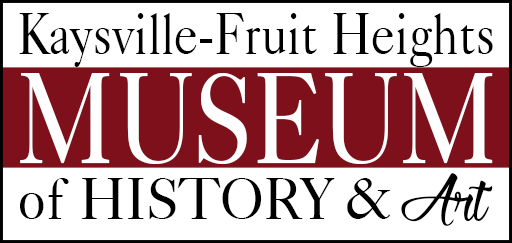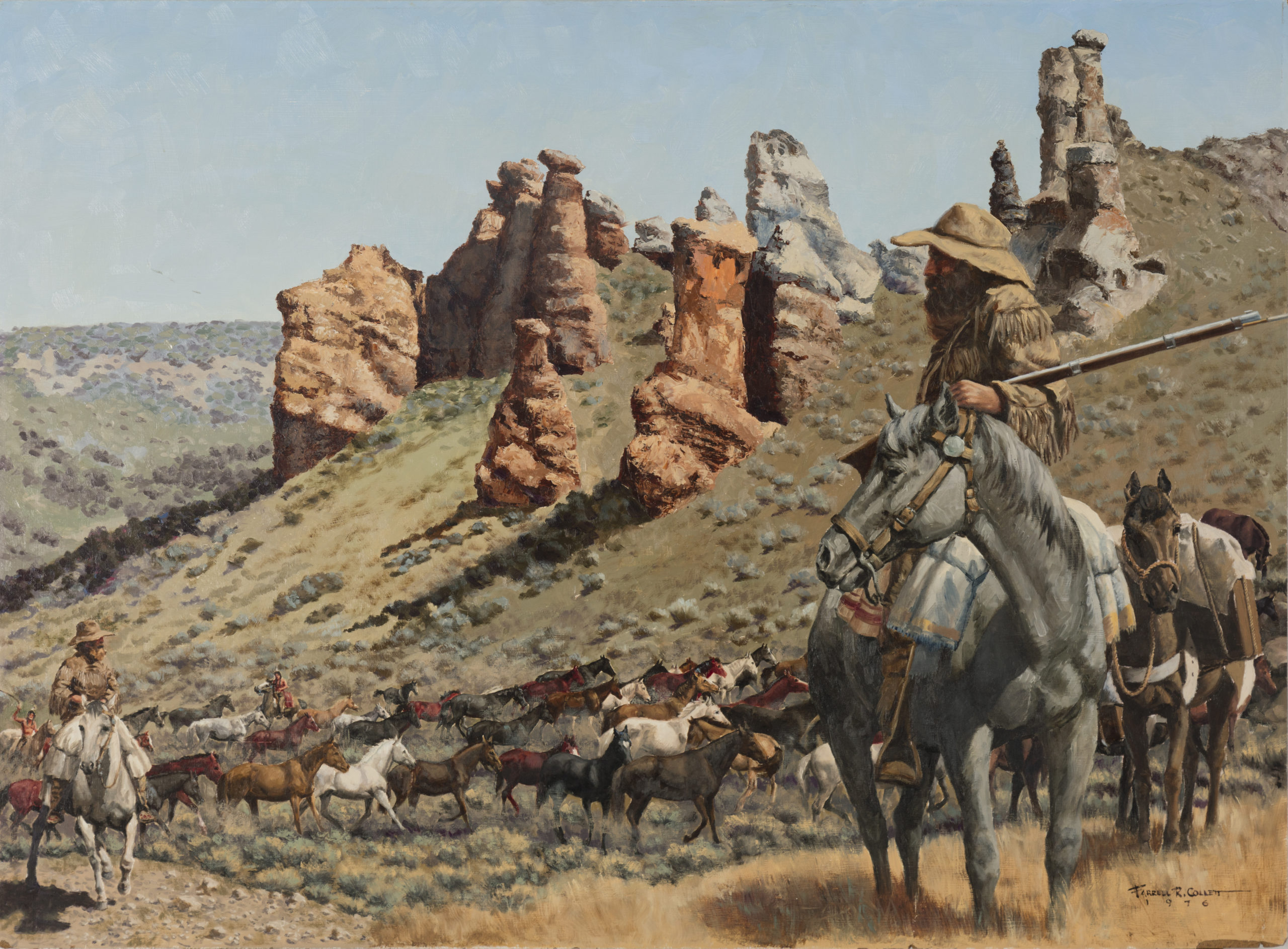1976 Exhibition Brochure
Considered by many to be the longest horse drive in recorded history, in the spring of 1848, Miles Goodyear departed from the current site of San Bernardino, California with 100 horses to sell at Fort Leavenworth for army use in the war with Mexico. Arriving at his destination he found the war was over, so in the spring of 1849 he herded the horses back to California where profit could be made. The trek was 4,000 miles round trip.
2023 Exhibit Guide
Miles Goodyear is depicted in this painting leading a horse drive along the Overland Trail. Goodyear was a mountain man who turned from fur trapping to trade and built Fort Buenaventura in 1845 on the Weber River, in what is now Ogden. Goodyear traded some of the horses with emigrants on the Oregon Trail, and others were left in the care of Hector Haight from Kaysville.
The majority of the horses, however, were driven 2,000 miles to Fort Leavenworth on the Missouri River for use in the U.S.-Mexican War. The war ended before Goodyear arrived in Missouri, so he drove 200 horses back to Utah and then to Sacramento and sold them for a large profit to gold miners. This marks perhaps the longest horse drive in American history, spanning nearly 4,000 miles in total.
Kaysville Area Connection
Hector Haight first settled Herd or Camp Creek on what would become known as Haight’s Creek which is on the border of Kaysville and Farmington. Some years later, it was called Blooming Grove, a recreation area for pioneers, where there is now located a marker.
Artist
Farrell R. Collett (1907-2007)
Farrell Collett was born in Bennington, Idaho, but spent most of his life in Utah. He received early art training from Brigham Young University and the University of Utah, but pursued additional studies at the California School of Fine Arts, the Art Institute of Chicago, and the American Academy of Art, while simultaneously working as a freelance illustrator.
He was a professor as well as the chairman of the Weber State art department for many years, and his work has been included in numerous national and international exhibitions and collections. Collett has received many awards and prestigious recognition for his work, and is featured in many private and corporate collections in the U.S. and internationally.
Sources
- “Bicentennial Historical Art Collection.” 1976 Exhibition Brochure, Special Collections, Weber State University. Spelling and punctuation corrected.
- Eyes Toward the Past. DVD.
- Karras, Marilyn. The Ogden Standard Examiner, 29 Aug. 1976, Sun, page 33.
Notes
Copyright owned by Weber State University Storytelling Festival. All rights reserved. Painting shown by Kaysville – Fruit Heights Museum with permission. Painting number 13 in the 2023 exhibit guide.


